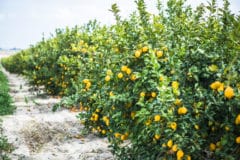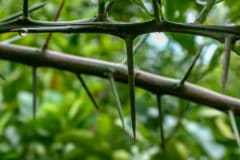Climate for Lemons
As subtropical plants, lemon trees (Citrus limon) thrive where summers are warm and winters mild. In the U.S., that makes them suitable for USDA hardiness zones 9 through 11. Although their growth slows dramatically in exceedingly hot weather, they’ll survive temperatures of up to 104°F (40°C) with enough soil moisture.
They produce best with eight or more hours of daily sun and temperatures consistently between 77°and 86°F (25°and 30°C). Low-humidity climates reduce their risk of diseases and pests.
What lemon trees can’t handle is frost. A forecast of temperatures below 29°F (-1.7°C) calls for immediate action to prevent branch, fruit or leaf damage. Watering them well and draping them with frost cloths is usually sufficient.
Lemon Trees and Wind
While mild breezes may help the trees stay cool, persistent heavy wind can strip their leaves or blossoms and scar their fruit.
Cold north winds are especially troublesome. Grow your lemons in a sheltered spot or protect them with a windbreak.
Best Soil for Lemons
The ideal lemon-growing soil has:
- Excellent drainage.
- A slightly acidic pH between 5.5 and 6.5.
- Sandy or sandy loam texture.
Avoid planting in poorly draining, clay-heavy or salty soil.
Soil Moisture
The amount of water a lemon tree needs depends on its size, location and the time of year. Where the summer temperature regularly exceeds 86°F (30°C), for example, one with a 14-foot canopy needs nearly 900 gallons (3407 liters) of water per month, delivered in three or four applications.
In mid-winter, the same tree needs just 110 gallons (416 liters) per month — and even less where winter is the rainy season.
Mulching Lemons
A 3- or 4-inch layer of organic mulch such as wood chips keeps the soil around a lemon tree moist without reducing its drainage.
Spread the mulch evenly from the edge of the canopy to 1 foot from the tree’s trunk. Never pile it against the trunk, or the bark may rot and expose the tree to invading fungi, bacteria or pests.
Expert gardener’s tip: Extending your mulch further than the canopy’s edges can’t hurt, and will definitely help, any feeder roots that spread that far.












